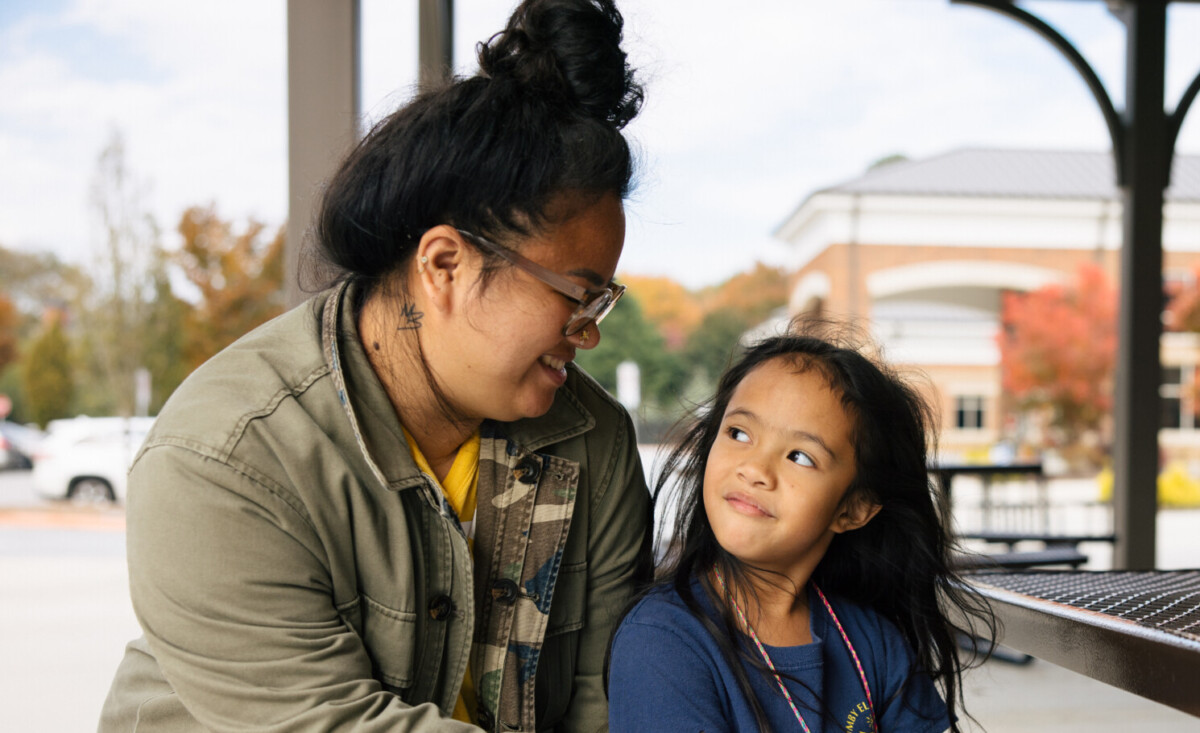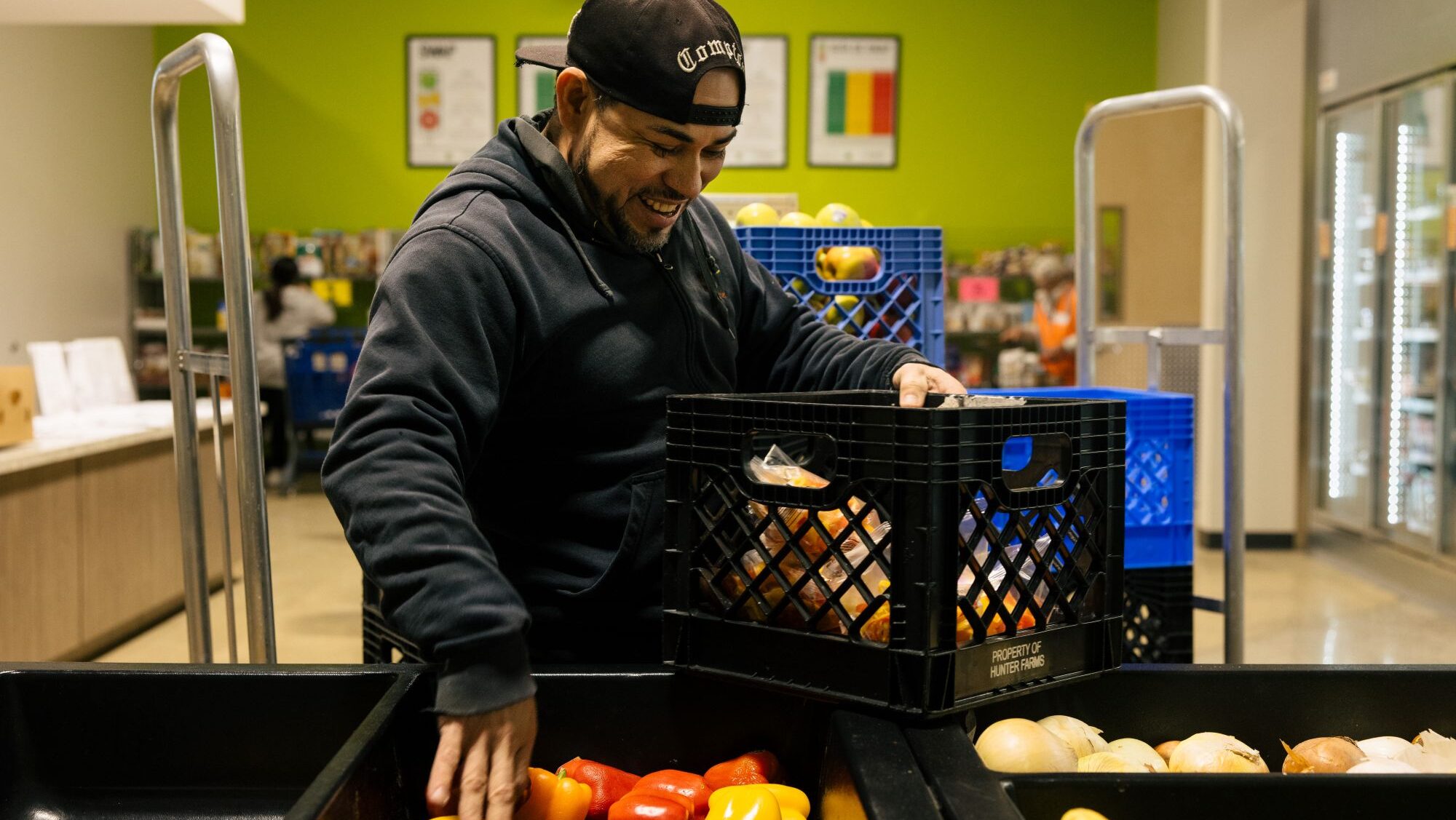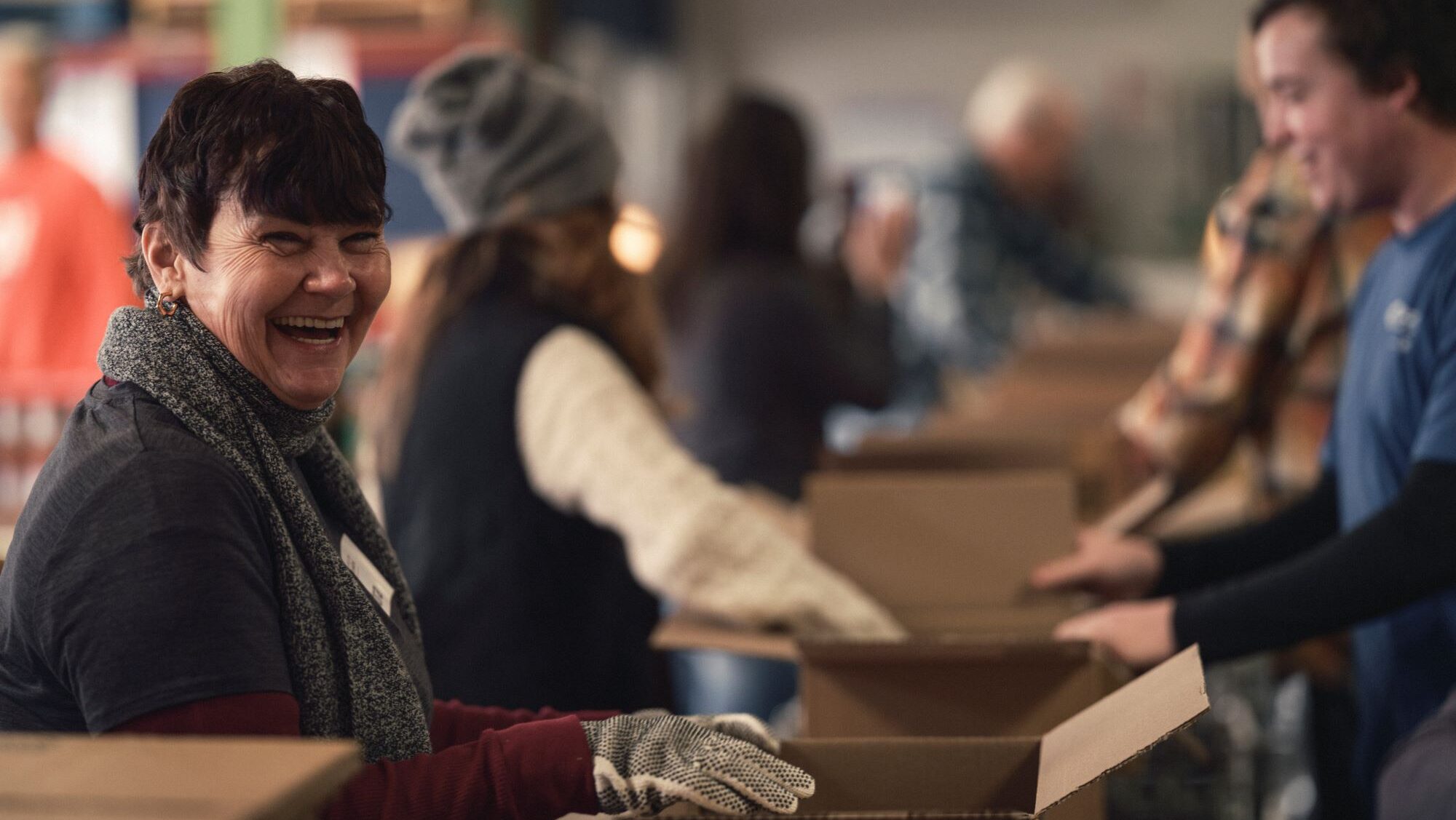[The following summarizes material presented in a virtual CEO Forum on April 12, 2023. You can watch the recording here.]
Everyone should have enough to eat. Full stop. But we know we still have some work to do to realize this vision for the future.
From July to December, the number of guests visiting Food Bank partner and program sites swelled to more than 123,000 each month on average, a year-over-year increase of about 14%. Yet, we know there are still tens of thousands of people across our service area who are not accessing our services, but who need help with groceries to ensure a healthy life.
Our current guests
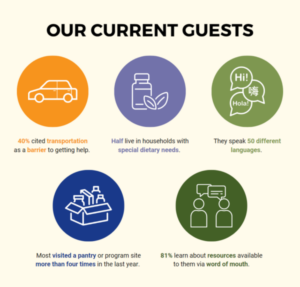
New research conducted as part of our strategic planning process uncovered some details about the missing guests: Who they are, where they live, and the barriers they face in getting food assistance. At the same time, we sought a more complete picture from our current guests and partners. We talked to 250 guests and over a dozen food pantry partners to hear about their evolving perspectives and needs. Here’s what we heard from this group of guests:
- 40% cited transportation as a barrier to getting help.
- Half live in households with special dietary needs.
- They speak 50 different languages.
- Most visited a pantry or program site more than 4 times in the last year.
- 81% learn about resources available to them via word of mouth, an issue compounded by the many different languages spoken by our guests!
Here’s what we also know:
- Fewer than one-third of our guests are using SNAP (Supplemental Nutrition Assistance Program) benefits. In Virginia, about two-thirds of households who are eligible participate. And among seniors who are food insecure and living on a fixed income, only about one-third are using SNAP benefits.
- 34% of individuals served are children. Across Virginia, 22% of children access some kind of food assistance.
Who’s missing from charitable food assistance?
For the past four decades, the Food Bank has been committed to providing food for our neighbors through vibrant community partnerships and passionate public support. But just because the services are there doesn’t mean everyone is accessing the help they need.
Unmet need exists in areas with and without the presence of food pantries and other distributions.
The Food Bank network was not intentionally designed—we didn’t place partners, they “popped up,” often where there were dedicated individuals, organizations, churches, and other charitable programs that wanted to support their communities. In our first year, we started with about 200 partners. Today, across 25 counties and 8 cities, we work with a far-reaching network of more than 400 community partners—food pantries, shelters, soup kitchens, and program sites like schools, community centers, and care clinics. But still, there are many who aren’t accessing our services.
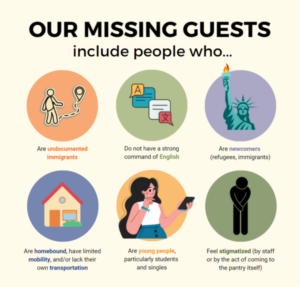
So, with that in mind, we set out to answer a few key questions about our missing guests:
- Who are our missing guests and where do they live?
- Why aren’t they accessing the Food Bank network?
Here’s what we found. Our missing guests include people who:
- Are undocumented
- Do not have a strong command of English
- Are newcomers (immigrants, refugees)
- Are homebound, have limited mobility, and/or lack their own transportation
- Are young people, particularly students and singles
- Feel stigmatized (by staff or by the act of coming to the pantry itself)
The barriers keeping these missing guests away are complex. They might be environmental or logistical—for example, the distance to the pantry is too far, the pantry is only open when someone is working, or there are language and transportation difficulties. Or the barriers might be more emotionally charged—such as embarrassment or shame about getting help, not wanting to be identified, not feeling welcomed, suspicion of the quality of food—or related to physical limitations, such as not being able to carry groceries.
Next steps: a new strategic direction
There are no one-size-fits-all solutions and that’s why we are working diligently with our consulting partners, staff, and Board of Directors to map an innovative and effective path forward. The good news is that these barriers are not entirely new to us; many are the same barriers that our current guests face. We will need to amplify and grow our tactics to make it easier for everyone to get the food they need to lead happy, healthy lives.
Our five-year strategic direction is set with and for our neighbors in mind. Indeed, they are centered in everything we do. Our plan includes three main goals:
- Eliminate disparities in access to nutritious food. From transportation to language to stigma, we will work to find ways to alleviate the burden borne by some of our guests in accessing our services. Because no one should feel like they can’t get the help they need.
- Improve the health of our guests. We will continue to source the most nutritious food so our guests can thrive. And we will make sure that our partners have the resources and support they need to boost guests’ health outcomes.
- Support household financial stability. We will help our guests access resources like SNAP, housing assistance, and utility assistance so they don’t have to choose between buying groceries and paying for other necessities.
None of this can happen without the support of our network of partner pantries and programs or the generosity of our community. Thank you for standing with us. We are stronger when we work together.
Learn more, get involved
- Donate: Make a donation to the Blue Ridge Area Food Bank to support your neighbors facing hunger.
- Volunteer: Sign up for a volunteer shift online or reach out to your local pantry to see if they need help.
- Follow us on social media: Like, follow, and share our posts!
- Use your voice. Subscribe to our Advocacy Alerts e-newsletter to hear how you can make a difference in your community.
 Chew On This
Chew On This
